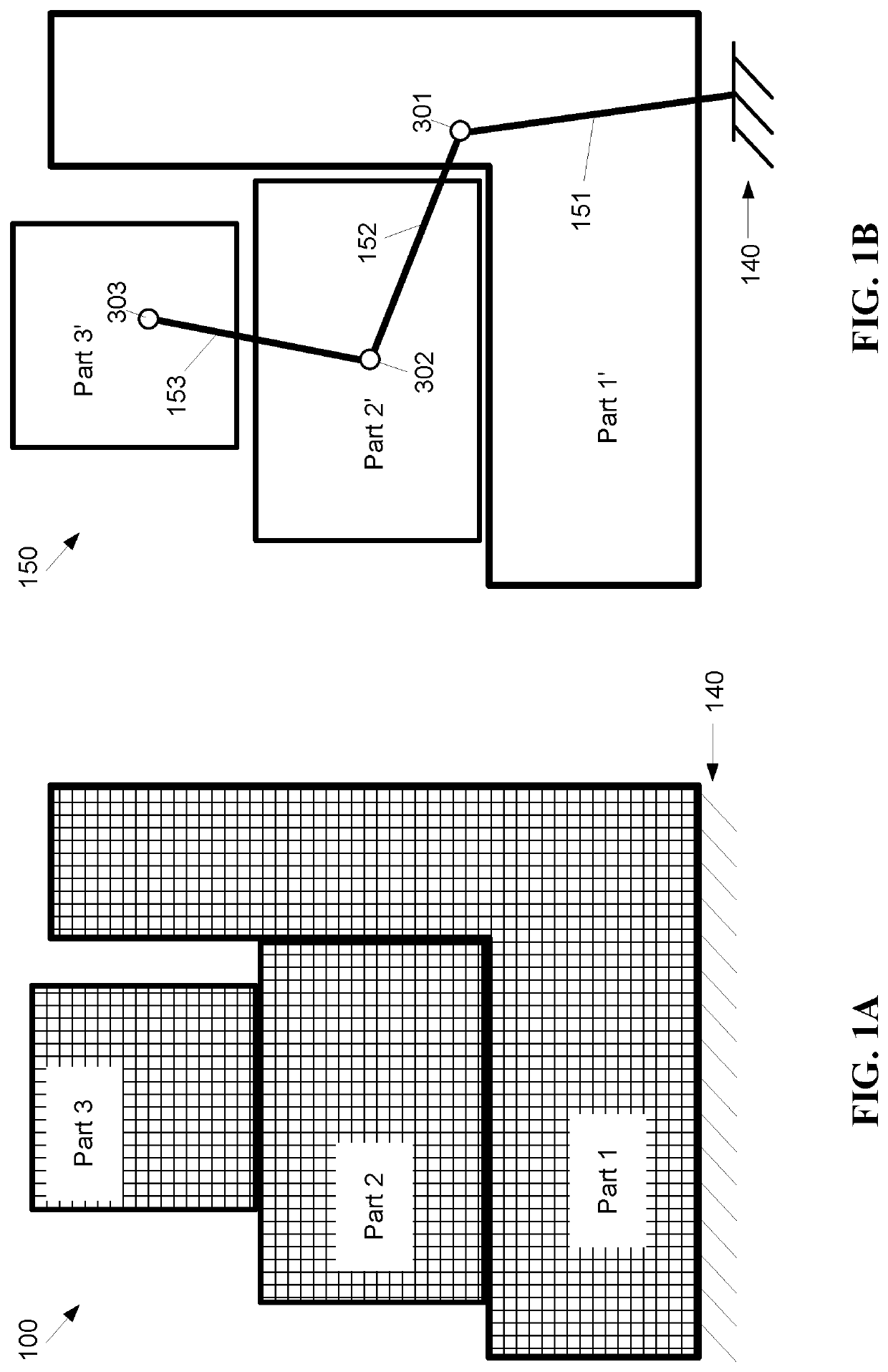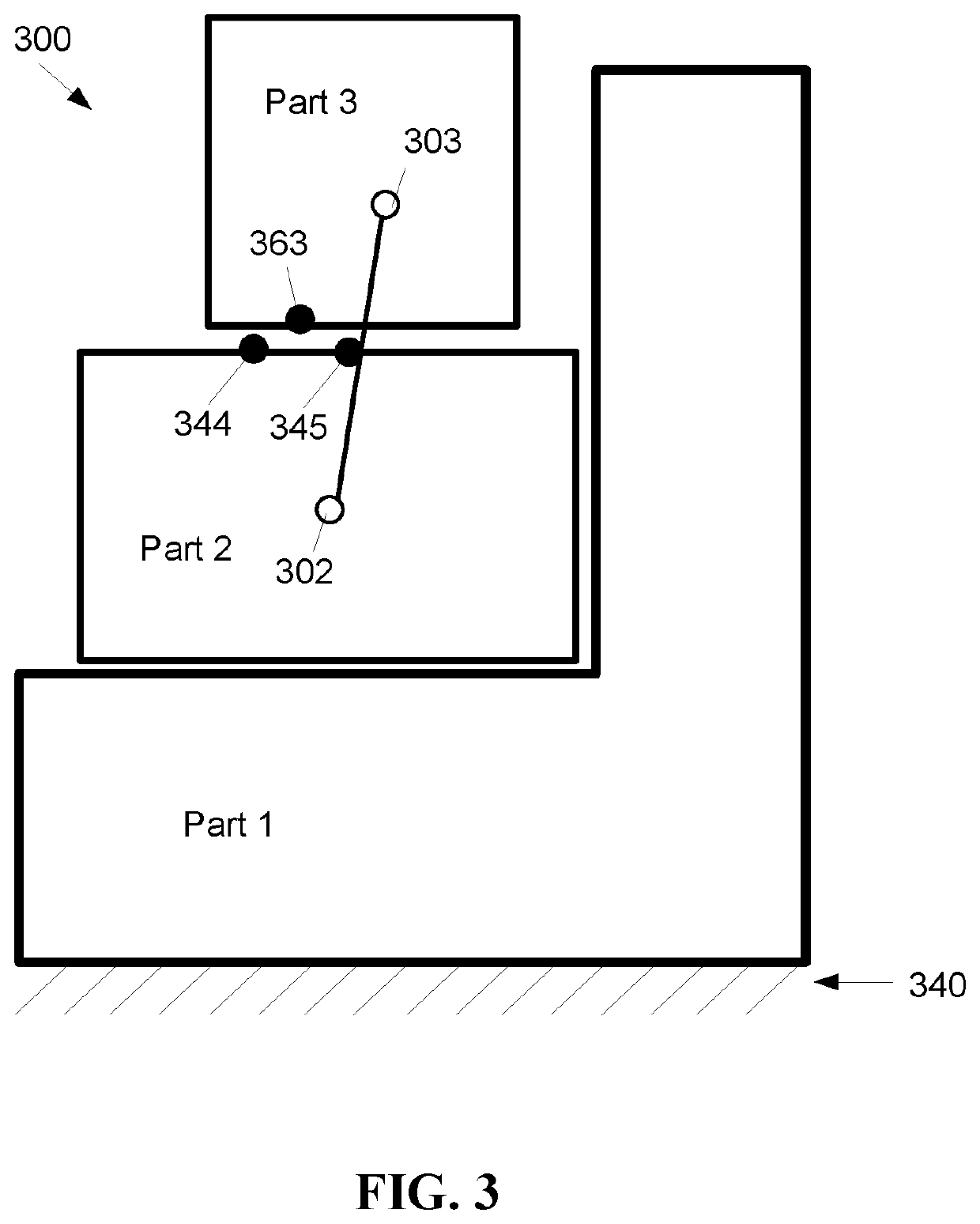Method for Fast Detection of Unconstrained Motion and Low-stiffness Connections in Finite Element Modeling
a finite element modeling and low-stiffness connection technology, applied in the field of model simulations, can solve the problems of unconstrained motion and often problematic low-stiffness connections between parts, and achieve the effect of increasing usability and robustness of finite element modeling softwar
- Summary
- Abstract
- Description
- Claims
- Application Information
AI Technical Summary
Benefits of technology
Problems solved by technology
Method used
Image
Examples
Embodiment Construction
[0018]Embodiments of the present invention provide a low computational method for identifying unconstrained motion and low-stiffness connections between parts prior to simulation.
[0019]The following definitions are useful for interpreting terms applied to features of the embodiments disclosed herein, and are meant only to define elements within the disclosure.
[0020]As used within this disclosure, “finite element method” refers to a widely used method for analyzing and solving problems of engineering using mathematical models, for example models of a mechanical structure. The finite element method is a particular numerical method for solving partial differential equations in two or three space variables (i.e., some boundary value problems). To solve a problem, the finite element method subdivides a large system into smaller, simpler parts that are called finite elements. This may be achieved, for example, by a particular space discretization in the space dimensions, implemented by th...
PUM
 Login to View More
Login to View More Abstract
Description
Claims
Application Information
 Login to View More
Login to View More - R&D
- Intellectual Property
- Life Sciences
- Materials
- Tech Scout
- Unparalleled Data Quality
- Higher Quality Content
- 60% Fewer Hallucinations
Browse by: Latest US Patents, China's latest patents, Technical Efficacy Thesaurus, Application Domain, Technology Topic, Popular Technical Reports.
© 2025 PatSnap. All rights reserved.Legal|Privacy policy|Modern Slavery Act Transparency Statement|Sitemap|About US| Contact US: help@patsnap.com



